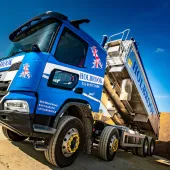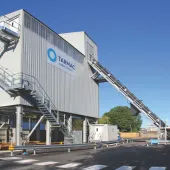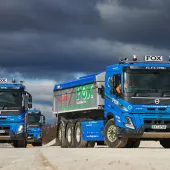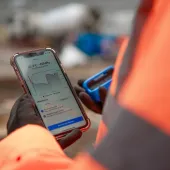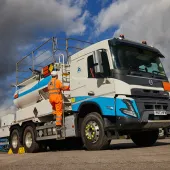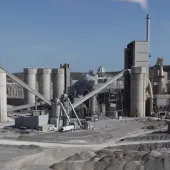Construction logistics: how do we scale up for net zero?
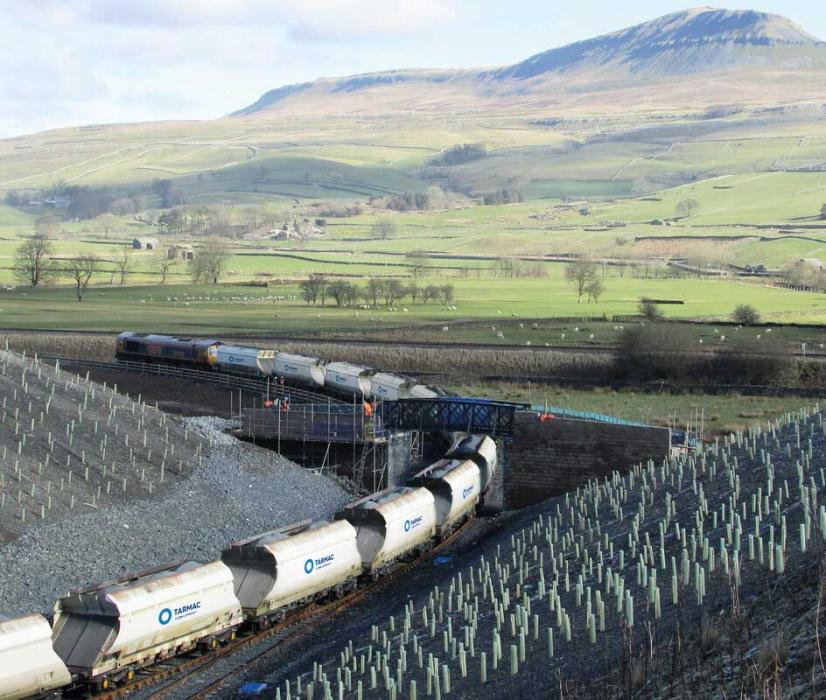
First published in the October 2023 issue of Quarry Management
By Ben Garner, low-carbon logistics lead, Tarmac
When thinking about the journey to net zero construction in the UK, many people’s first thoughts are focused on cutting carbon in manufacturing and materials processes. While this will be integral, delivering a net-zero industry will also require a fully decarbonized, multi-modal transport sector.
Achieving this goal calls for a cross-industry effort with support and leadership from central and local government. It requires new technologies and infrastructure, but also a greater appreciation of the importance of freight logistics to support essential industries such as construction.
Low-carbon improvements to our freight and logistics are already supporting Tarmac’s transition to net zero. Here are some reflections on industry progress to date, and some potential next steps for construction and the wider transport and infrastructure sectors to seize this opportunity.
Tackling the last mile
There has already been a lot of progress made to tackle last-mile logistics. This is due to rapidly changing policy requiring logistics teams to be versatile enough to stay ahead of the curve. One emerging policy is low- and ultra-low emissions zones (ULEZs), which are becoming more common around the country. Today, 30% of the UK population live in a town or a city with a low- or zero-emission zone.
Against this backdrop, last-mile logistics has started to evolve through schemes such as the EV100, encouraging organizations to transition 100% of their car and van fleet to electric vehicles (EVs).
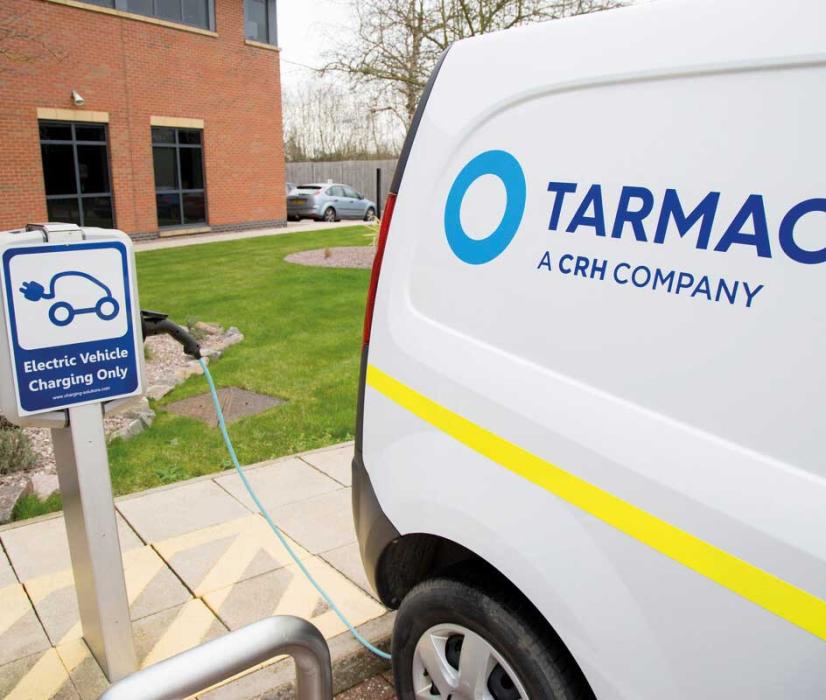
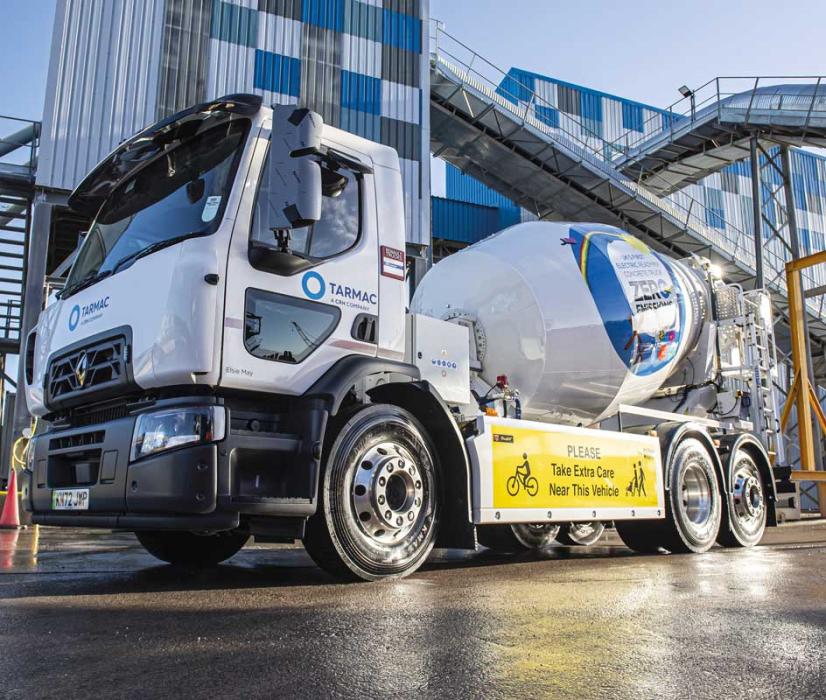
There are also technological initiatives taking place, such as the development of the UK’s first all-electric concrete mixer, which Tarmac have successfully rolled out for use in Birmingham. This is set to reduce up to 42 tonnes of CO2 annually.
But the savings do not stop there – the learnings from development of the e-mixer, eg lightweighting and fuel-efficiency measures alongside a digital operating system, can be applied to diesel vehicles. This opportunity is already in development and could help to reduce carbon in internal combustion engines as part of the ongoing transition to electric.
In addition, we see alternative fuels such as hydrotreated vegetable oil (HVO) or other biodiesels as an essential part of the move to net zero. These are transitional fuels that have the potential to improve our carbon footprint today while we work to make zero emission solutions viable at scale. They have a big part to play, provided they are responsibly sourced. Extensive testing and trials have been carried out on some of these low-carbon alternative fuels over the last few years on road, off road, on rail, and in marine applications.
Realizing rail freight’s potential
Rail freight remains central to delivering a greener, cleaner transport network and providing long-term value. The UK must not underestimate its importance to national construction. Helping to transport more than 20 million tonnes of cement and aggregates across the sector every year, there has been an upward trend in rail freight use over the past decade.
Our own operations make us one of the largest private users of the UK rail network, so we are working hard to explore further options to decarbonize, such as using low-carbon fuels for locomotives. HVO has been trialled for the delivery of materials along key strategic rail routes. It offers a reduction of up to 90% of a train’s carbon emissions compared with traditional red diesel.
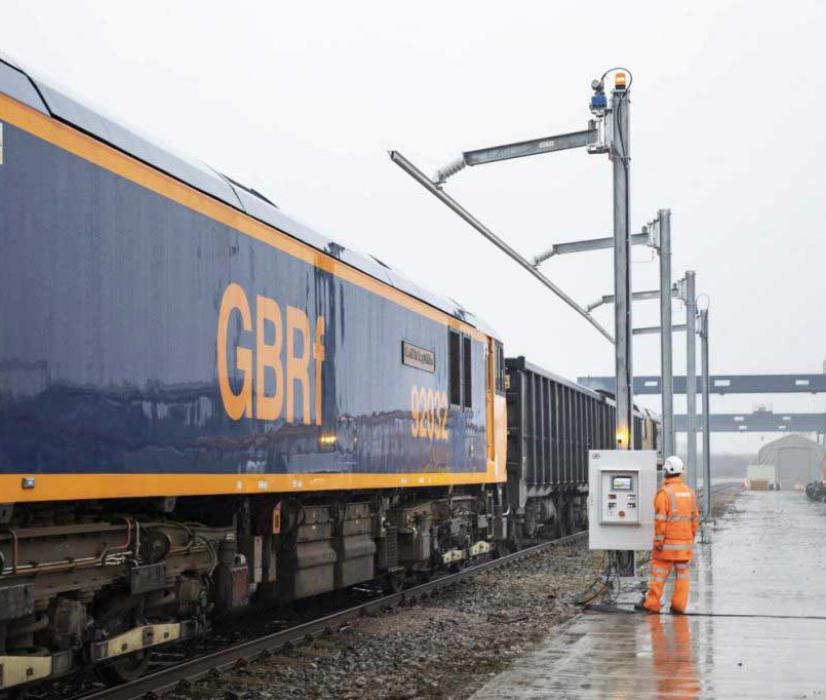
Another initiative we have trialled is an innovative overhead loading system which allows the electricity lines supplying locomotives to be temporarily removed while loading takes place. Rolled out across the network, this would support the decarbonization of rail terminals, which currently rely on diesel to power locomotives.
Investment in wider infrastructure and regulatory changes
It is now well understood that meeting net zero will require the electrification of society, but a big challenge lies ahead in establishing the infrastructure to support it.
With the development of EV battery technology approximately doubling vehicle range every two years we can be confident these vehicles will meet our needs in the years ahead. However, what remains less clear is when the infrastructure will be in place to charge all these new vehicles. The current system for establishing new connections is outdated, and the process of upgrading substations to cope with increasing demand currently takes too long. Dedicated public HGV charging facilities are essential, and yet there are none in the UK today.
Similar investment and planning will be needed to expand the hydrogen network too. The generation and transportation of this fuel will power heavier road and plant vehicles as we transition to net zero. The task at hand is vast – with the need for both on-site and public charging facilities but little clarity from policymakers on how this will be achieved and funded.
Another major barrier to the electrification of construction transport will be the weight limits applied to vehicles. The UK Government has recently indicated that legislation for electric trucks up to 26 tonnes will allow for an extra two tonnes to cover battery weight. While this step is welcome, it is not currently being applied to the larger trucks which make up most of our sector’s fleet. In addition to infrastructure challenges, this legislation will need to be extended to cover larger road-going vehicles if we are to accelerate the uptake of electric HGVs.
Encourage behavioural change
Beyond the long-term net-zero needs, there are opportunities that can be achieved in the short term to cut carbon emissions on a daily basis. Much of this can stem from basic behavioural change. For example, by installing smart telematics systems on vehicles, we are encouraging more energy-efficient driving. By providing data to highlight rapid acceleration, heavy braking, and idling engines, simple solutions like this could reduce fuel consumption by up to 10% as we train drivers to become more carbon conscious.
Construction customers can help to decarbonize logistics too. Modern designs and safety standards addressing historic safety concerns mean there should be no barrier to using larger HGVs with 29-tonne payloads as standard. If customers could receive these higher capacity vehicles, around 30% fewer journeys would be required overall.
Similarly, the construction industry is traditionally accustomed to receiving all deliveries for a job before 8.00am on any given day, with site teams preferring to have all materials available on site before starting work to allay concerns about stop-start activity throughout a shift. However, with route optimization software and vehicle-tracking devices, logistics teams are now better equipped to provide reliable, staggered deliveries. This means that fewer vehicles are needed on site at any given time, reducing idling engines, empty mileage, and the number of vehicles on our roads.
Scaling up
We are already well on the way to decarbonizing construction logistics. We can also take positives from the fact that we are starting to see the establishment of an integrated low-carbon logistics model. What we need next is to see these measures rolled out on a much larger scale and to secure greater clarity on the expansion of electricity and hydrogen networks.
Our transport networks must be multi-modal to help the UK support the transition to net zero, and the vital role of rail freight must not be overlooked.
Big challenges lie ahead to ensure we meet net-zero targets, but construction logistics teams are building from a strong foundation of technological and behavioural changes. What is needed now is to scale up delivery and establish an integrated low-carbon logistics model to meet the needs of construction.
Subscribe to Quarry Management, the monthly journal for the mineral products industry, to read articles before they appear on Agg-Net.com

